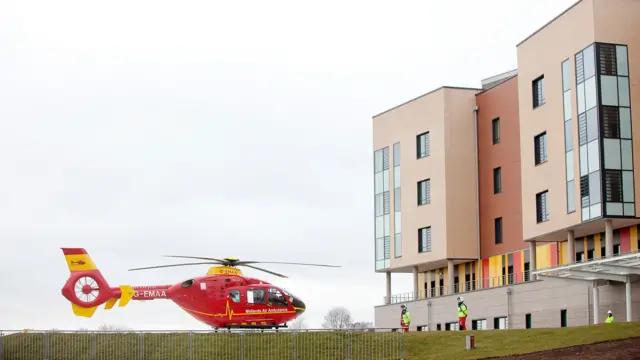Teenager 'would be dead' without trauma centre's carepublished at 11:08 BST 24 September 2019
 Jennifer Meierhans
Jennifer Meierhans
BBC News Online
Another patient I've spoken to in the rehabilitation unit is Cameron Barker, from Cliff Vale, Stoke-on-Trent.

The 17-year-old told me he was riding his new motorbike when he collided with a lorry.
"I woke up on the road with a paramedic over me. I just didn’t think it was real - it was like a dream.
"I was blue-lighted over here, I came out of the ambulance and saw all my family stood here waiting for me and I thought 'OK, this is more serious than I thought'."
He said: "I broke my leg, I’ve got no spleen and my arm doesn’t work. Cracked my first rib and broken my collar bone. I’m lucky to be alive and they said if I didn’t go for surgery in two hours I would be dead.”








